19 Oct 2015
How an avian vet tackles dealing with sick birds

The correct positioning for a lateral radiograph of a grey parrot.
Many of the same principles apply regardless of species when it comes to a sick or injured animal that presents to a veterinary surgeon.
All patients need to be appropriately triaged, thoroughly examined and provided with appropriate first aid before a plan can be drawn for diagnostics and treatment. However, some fundamental differences exist between species of the different vertebrate classes.
While many vets are familiar with the presenting sick dog or cat, the approach one might take with the sick exotic may differ. In this article we introduce the usual approach an avian vet might take when presented with a sick bird and discuss some of the peculiarities true of avian patients in general when compared with their mammalian or reptilian counterparts.
A matter of urgency
Two important points specific to the sick avian patient should be remembered. Firstly, because birds are, on the whole, prey species, they have evolved to hide signs of illness for as long as they possibly can to avoid seeming weak to potential predators. Secondly, birds have a very high metabolic rate in comparison to most mammals. These two factors mean by the time an owner notices a bird is ill, it is often very ill and its condition is likely to progress very quickly. This means the vet does not often have the time to delay appropriate treatment if he or she realistically hopes to successfully treat an ill bird.
In more conventional mammalian patients it is often appropriate to do a trial treatment before spending money on diagnostics in the hope the problem resolves, but this approach is much less suitable for the sick avian. The time window to get the appropriate treatment on board quickly is often very limited and if the assumed diagnosis turns out to be wrong, it’s then too late. The importance of early and thorough diagnostics is usually greater in the case of the sick bird. This added urgency means it’s incredibly important for any veterinary practice with an avian caseload to have a vet familiar with avian patients on standby, or the details of an appropriate establishment where cases can be directed within easy reach. It is often not appropriate to leave a sick bird until the morning – time is often always of the essence.
Inform receptionists
The avian practice receptionist has an important role in that he or she is the first point of communication with owners. It is the role of the receptionist to assess the initial severity of a situation and advise accordingly. It is also his or her job to advise owners on the practicalities of bringing a bird to the practice. Thus, good quality training for receptionists and appropriate standard operating procedures for them to refer to are vital.
The final role of the receptionist is to recognise when an appropriate avian practitioner is not available and be aware of other suitable facilities where patients can be redirected.
There are several useful bits of advice receptionists can pass on to clients. It is often the case sick birds are presented in a shoe box or cardboard pet carrier, which not only makes it difficult for the vet to assess the bird prior to handling it, but means a lot of useful information about the bird’s usual environment is missed when its cage could have been brought instead. For small birds such as budgerigars and cockatiels it is far better to bring the entire cage if practical.
Advising receptionists to ask those with wildlife casualties to remain in the practice car park prior to triage is well worth doing. Wildlife casualties with a potential avian influenza, or a Newcastle’s disease patient could be disastrous for the practice and other patients.
Minimising stress
Minimising stress is very important for the sick avian patient. Where separate waiting facilities are not available, it may be worth a receptionist directing a fluffed-up, sick bird into a warmer, quieter consulting room in advance of the vet arriving, rather than having them perched next to a barking dog in the draught of the practice entrance. Ideally, a separate waiting area for exotics would be present.
Birds and other exotics should not be hospitalised alongside barking dogs, or in sight of cats or ferrets, which are natural predators. For many practices that have a single exotics ward, there is a conflict of interest between smaller mammalian patients that suffer from heat stress very readily and avian and reptilian patients, which, on the whole, benefit from being kept warm. Ideally, a separate ward for avian patients would be in place.
Safety steps
It would not be uncommon for a regular general practice to use air fresheners and scented candles on account of the smells often associated with the veterinary environment. For birds, which are very susceptible to respiratory irritants and toxins, these could spell disaster. Therefore, the avian-friendly practice should take steps to avoid any sort of respiratory pollutant.
Equally, birds are very susceptible to polytetrafluoroethylene (PTFE; Teflon) toxicity. The fumes from overheated PTFE can kill a healthy bird extremely quickly and smaller birds such as budgerigars are particularly susceptible. PTFE is found in many appliances, from non-stick frying pans to space heaters and hair dryers, but any appliance that contains PTFE components should be strictly barred from an avian veterinary practice.
History taking
The history taken by an avian vet is normally two to three times more extensive than would be the case for a standard first opinion cat or dog consultation. A standard first opinion avian consultation at the authors’ practice is half-an-hour long. During this time, the vet is able to watch the bird closely for subtle clues as to what the problem might be. Often, parrots present with unspecific signs of illness, which is one of the main reasons a detailed history is always a good investment for the vet at the start of a diagnostic work-up. There is a lot of relevant background information in the case of most avian health problems and, for most sick parrots, the following questions might be asked in a typical consultation:
- how old is the bird?
- how long has it been in the owner’s possession?
- where was it from originally?
- was it hand-reared or parent-reared?
- is the bird particularly bonded to one specific member of the household?
- does the owner have other birds?
- when was the last bird introduced to the household?
- have there been any problems with any of the other birds?
- has the bird been boarded alongside other birds?
- what kind of cage/aviary does it live in?
- where is the enclosure located?
- is the bird covered at night?
- how much sleep does the bird typically get?
- what sort of perching is provided?
- how long does it spend caged during the day?
- when it is not caged, how free range is it?
- what is the bird’s staple diet?
- what brand of seed/pellet is fed?
- is seed loose or pre-packed?
- where is it stored?
- what types of fruits and vegetables are provided typically?
- how often is the bird misted or provided with bathing facilities?
- does the client provide any UV lighting?
- is anyone in the house a smoker?
- do the clients use perfumes or cleaning products, such as Febreze or Shake ‘n’ Vac in the vicinity of the bird?
- do the owners cook with a Teflon pan?
- could the bird have come into contact with any heavy metals?
- has the client noticed a change in the bird’s droppings?
- has there been any regurgitation?
- has the bird ever been tested for any infectious disease?
- have the owner’s noticed a voice change recently?
- has anyone in the household suffered flu-like symptoms recently?
Obviously, for a bird in a critical condition, for example in severe respiratory distress, it would be wholly irresponsible to go through a comprehensive history while the bird continued to struggle. Therefore, in some cases, it will be necessary to get consent immediately to place an air sac breathing tube to stop excessive haemorrhage or at least place the bird on oxygen while the remainder of the history is obtained.
Clinical examination
The clinical examination should be in two main parts – visual examination of the bird while in its cage and then a thorough physical examination of the restrained bird. It is important not to attempt to restrain birds for examination that appear very weak or dyspnoeic as it is highly likely the stress of this procedure will result in a deceased patient.
In the case of very small patients, budgerigars in particular, a conscious physical examination should only take about 30 seconds and cover those parts that cannot be done purely by visual examination – predominantly palpation of the coelomic cavity and examination of the wings and area under the wings.
It is well documented smaller birds such as budgerigars can suffer a cardiac arrest as a result of capture and handling, although providing the capture is gentle, swift and professional, it is a rare occurrence.
In the authors’ experience, it is difficult to conduct a thorough physical examination on a conscious bird. Parrots generally do not like being restrained in towels and will resent being manipulated. In a sick bird, stress should be kept to a minimum.
For a vet familiar with avian anaesthesia it is often preferable to do a more thorough and stress-free physical examination under a short general anaesthetic. The specific points that should be covered are:
- eyes
- ears
- nares
- cere
- beak
- choana
- head/sinuses
- neck/crop
- pectoral muscles
- abdominal palpation
- trunk feathers/skin
- preen gland
- legs/feet
- cloaca – a papilloma check in susceptible species
- both wings should be pulled out with equal tension and motion of the joints assessed
- flight feathers should be examined for moulting activity or abnormalities such as fret marks
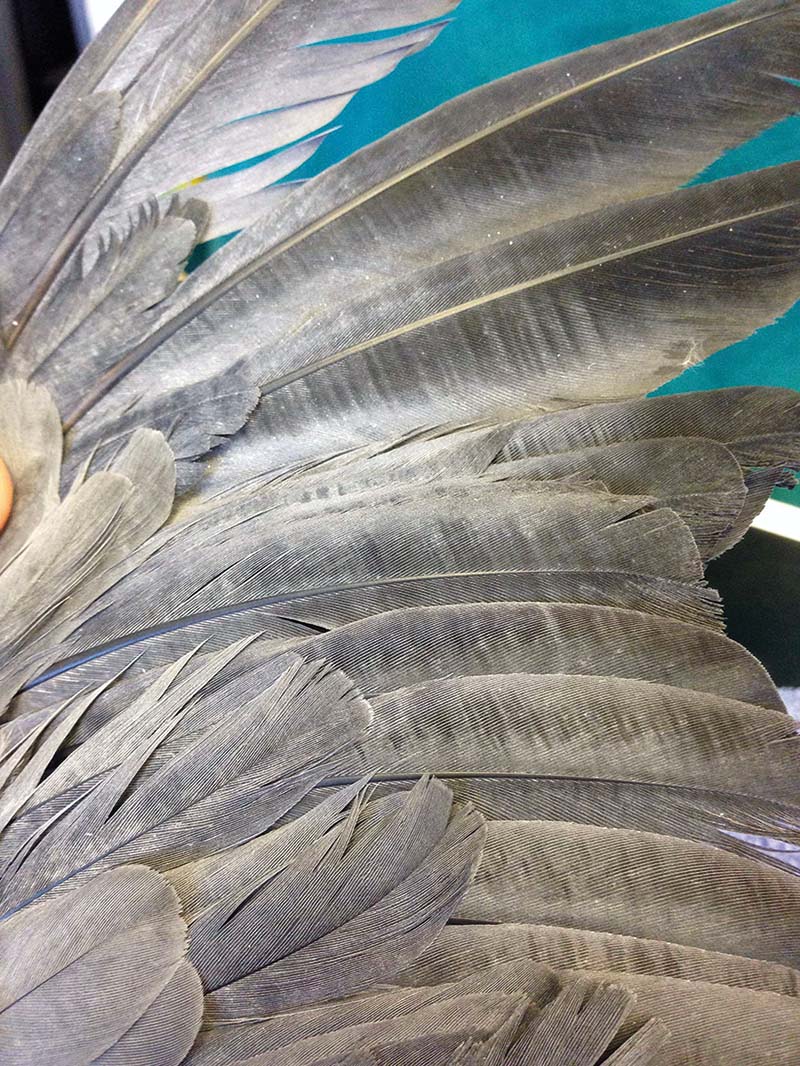
IV catheter placement
Any bird that requires fluid therapy, and all birds due to have an anaesthetic lasting longer than 15 minutes (providing the patient is big enough for it to be done practically and reasonably) have an IV catheter placed at the authors’ facility. In parrots, this is always done in the basilic vein, which runs just over the elbow. A winged piece of sticking plaster wrapped around the catheter is used to secure it with two skin sutures in the proximal two corners of the tape and a suture through the tape and around an adjacent flight feather distally. Generally, parrots, unless very bright and active, do not interfere with IV catheters. Hospitalised birds can be given IV fluid boluses regularly – every four hours is typical unless the patient is particularly intensive.
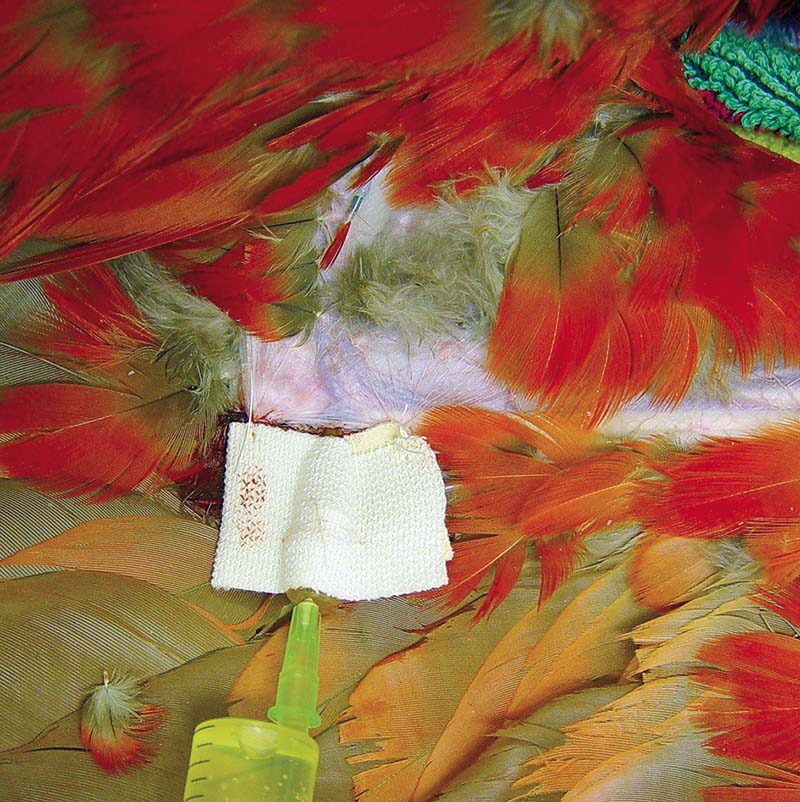
Diagnostics
Faecal analysis, blood screens (haematology and biochemistry), infectious disease testing, radiography, ultrasonography, CT and endoscopy (predominantly tracheoscopy and coelioscopy) are all examples of in-house diagnostic tests that may commonly be used by an avian vet as part of a work-up. Several additional tests can be performed where appropriate to include cytological examination, biopsy and culture, and sensitivity testing; however, information about the specifics of each is beyond the scope of this article.
The more diagnostic testing the clinician can perform in-house, the better. While it may sometimes be appropriate to send even basic blood samples to an external laboratory for results the following morning, there will be occasions where bloods cannot be sent out until the next working day and, thus, it will be at least 48 hours before results are received. This is almost always too long to wait in the case of a sick bird, so it pays for the avian practitioner to have a good in-house laboratory with machines able to run bloods immediately, where a clinician can perform certain disease testing, for example, Chlamydia serology, and have a result within the hour, and where bacterial culture and sensitivity testing (even if the bugs that grow cannot be speciated) can be readily performed for those cases where time really is of the essence.
Endoscopy is essential for avian practice and although many practices will have an endoscope, those required for avian patients are usually different to those used for dogs and cats and are not inexpensive. For the dedicated avian/exotic practitioner the ability to perform rigid endoscopy is vital and 2.7mm 30° and 0° scopes, along with an appropriate light source, potentially with a smaller 1.9mm scope and a larger 4mm scope, are essential.
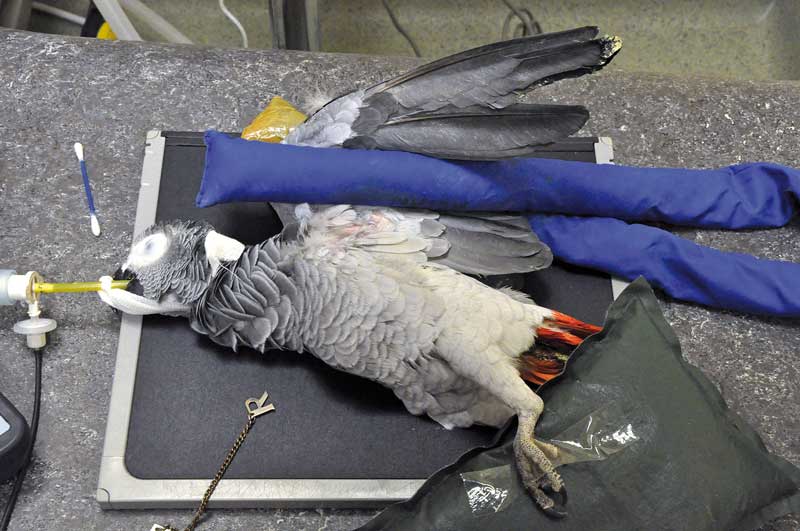
Prescribing medications
As with other areas in exotic animal medicine, there are few licensed products in comparison with more traditional companion animals. However, licensed products are available for specific conditions and it is important for vets to prescribe appropriately under the cascade. An off-licence declaration must be signed by the client in advance of any unlicensed product being provided for the patient, and one can only deviate from the cascade with a good scientific reason – never on financial grounds alone.
When looking up doses, it would generally be considered appropriate for an avian vet to refer to a recent edition of a specific avian/exotic animal formulary that is appropriately referenced, such as the Exotic Animal Formulary (2013).
There are many medications routinely used in general practice – for example, corticosteroids and local anaesthetic agents, that can be quite toxic to birds and, therefore, should only be used in exceptional circumstances.
Hospitalising sick birds
A practice set up for dealing with sick birds would typically have a quiet, warm ward area specifically for sick avian patients or exotics in general. Predator and prey species should not be kept within sight of each other. The sick companion parrot should be kept at a temperature of 26.7°C to 29.4°C and at a humidity of 70%, therefore, cages should have the ability to be heated.
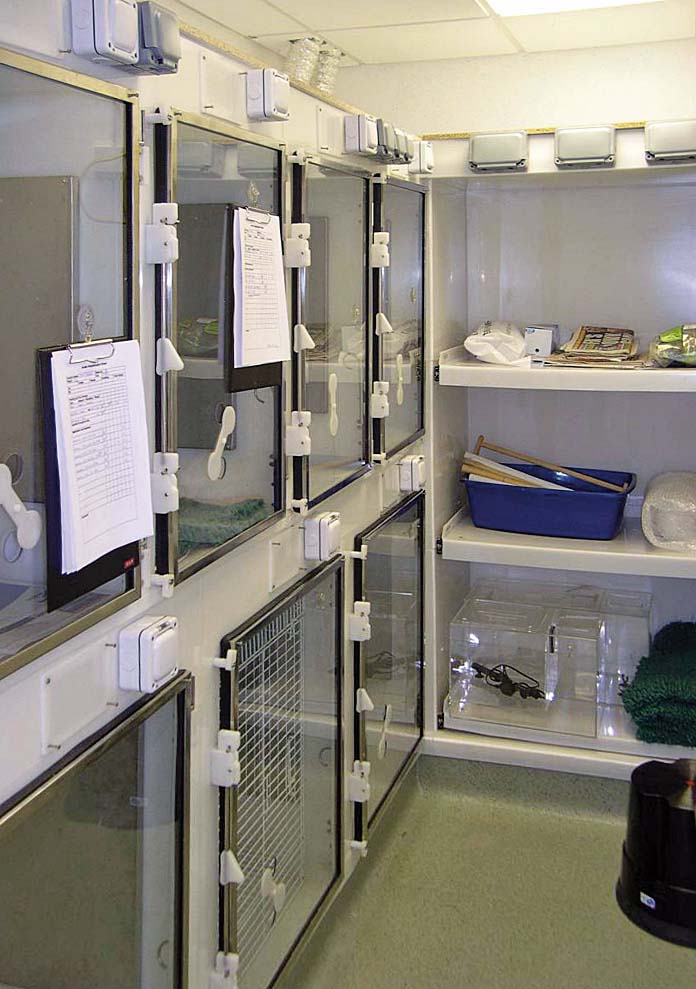
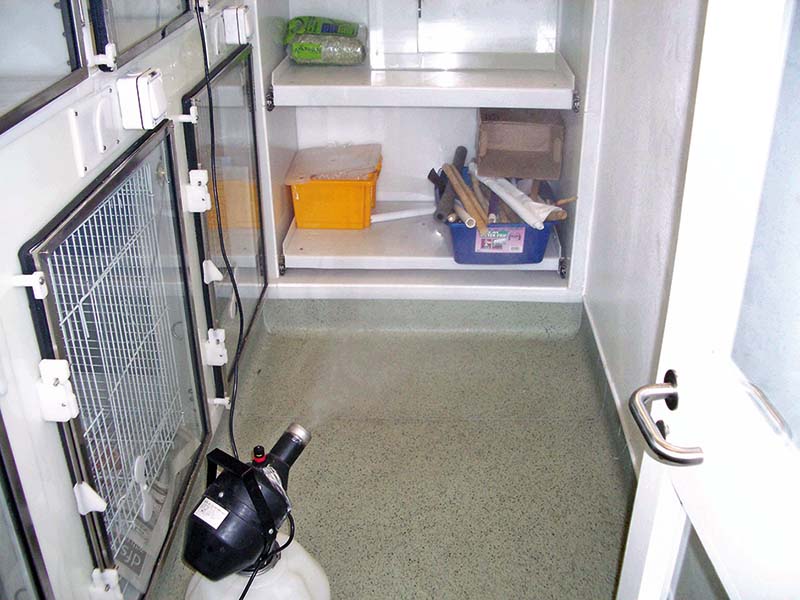
Because of the prevalence of diseases spread by the respiratory route in birds, it is recommended avian patients are maintained in their own air spaces with a ventilation system that extracts air from individual kennels, preventing any contaminated air from entering the main ward.
Avian veterinary practices should have several items of equipment. Gavage or crop tubes are absolutely essential. For parrots, metal tubes are most practical as softer tubes are very likely to get bitten in two, risking part of the tube disappearing into the crop. A range of small endotracheal tubes is essential; however, it is worth the avian vet having some special “stepped” endotracheal tubes for use in macaws, which are known to be predisposed to developing tracheal strictures postintubation.
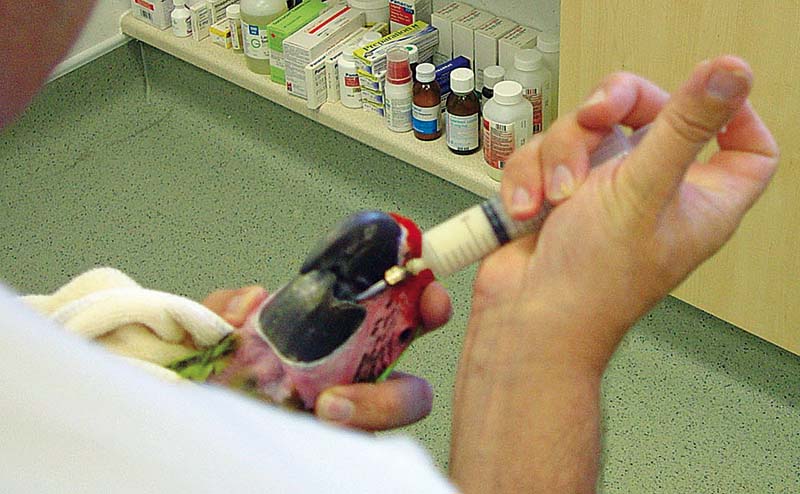
Capnography is extremely useful for monitoring avian anaesthetics. Avian soft tissue and orthopaedic surgery requires several items of equipment one would not normally expect to find in a typical canine/feline practice – for example, the use of magnifying loupes, microsurgical instruments and vascular clips is often essential.
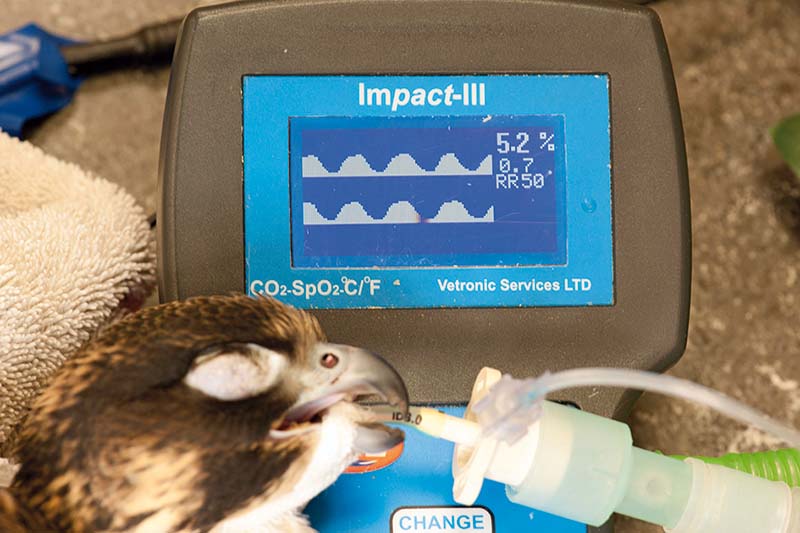
One piece of equipment every avian practice ought to have is a nebuliser – a machine that turns a liquid into micro droplets in the air that can be inhaled. This is an efficient way to get medications such as antibiotics or antifungal drugs directly into the respiratory system and, in most avian respiratory cases, we would be nebulising for 20 minutes at least twice daily.
Nursing care
One factor often overlooked is the provision of appropriate nursing care for exotic species and for avian patients in particular. Just as vets treating birds must be exotics-savvy, so too must the nurses who are often the ones handling the bird and administering most of the medications.
Postgraduate qualifications are available for veterinary nurses in exotic species and, while a lack of them does not necessarily mean a nurse is in any way incompetent – a qualified exotics nurse is a sure sign of knowledge and dedication in this particular field.
The most important point about nursing staff is that, for any facility hospitalising sick birds, there must, ideally, be nurses available who are confident in dealing with avian species 24/7 – a bird in intensive care often cannot be left all night without being tended to.
Most sick birds will need to be crop fed. It is important for any practice to stock an appropriate range of critical care diets for carnivores, omnivores and herbivores, which are fresh and in ready supply. Crop feeding, while simple when you know the correct technique, is a potentially hazardous procedure with possible complications such as crop puncture or aspiration pneumonia.
It is essential staff members are appropriately trained to carry out what is a very necessary and regular task so complications do not occur.
Keeping up with latest techniques
Avian medicine is still a relatively young field and there are a lot of discoveries to be made. This means keeping up to date with colleagues and new developments is essential. All clinicians and nurses seeing birds should attend regular CPD events in the form of seminars, symposiums and conferences and, ideally, subscribe to the relevant clinical journals for avian medicine.
Biosecurity
Avian medicine is not without its highly transmissible infectious diseases. The most significant of which, as far as parrots are concerned, is psittacine beak and feather disease (PBFD), which is widespread and almost invariably fatal. It is highly contagious – any parrot that presents with symptoms consistent with PBFD (for example, feather or beak dystrophy) has potentially contaminated the practice and, in these situations, it is necessary to thoroughly disinfect the areas where the bird has been.
PBFD is spread in feather dander, which drifts through the air and ends up in crevices impossible to reach with manual disinfection. The best way to disinfect an area that may have been contaminated with PBFD is with a fogger that sprays disinfectant droplets into the air, ensuring all areas, including the tops of cupboards and door frames, are disinfected. A fogger is not a piece of equipment a practice would generally have available, but is a necessary investment for any practice regularly seeing avian patients.
